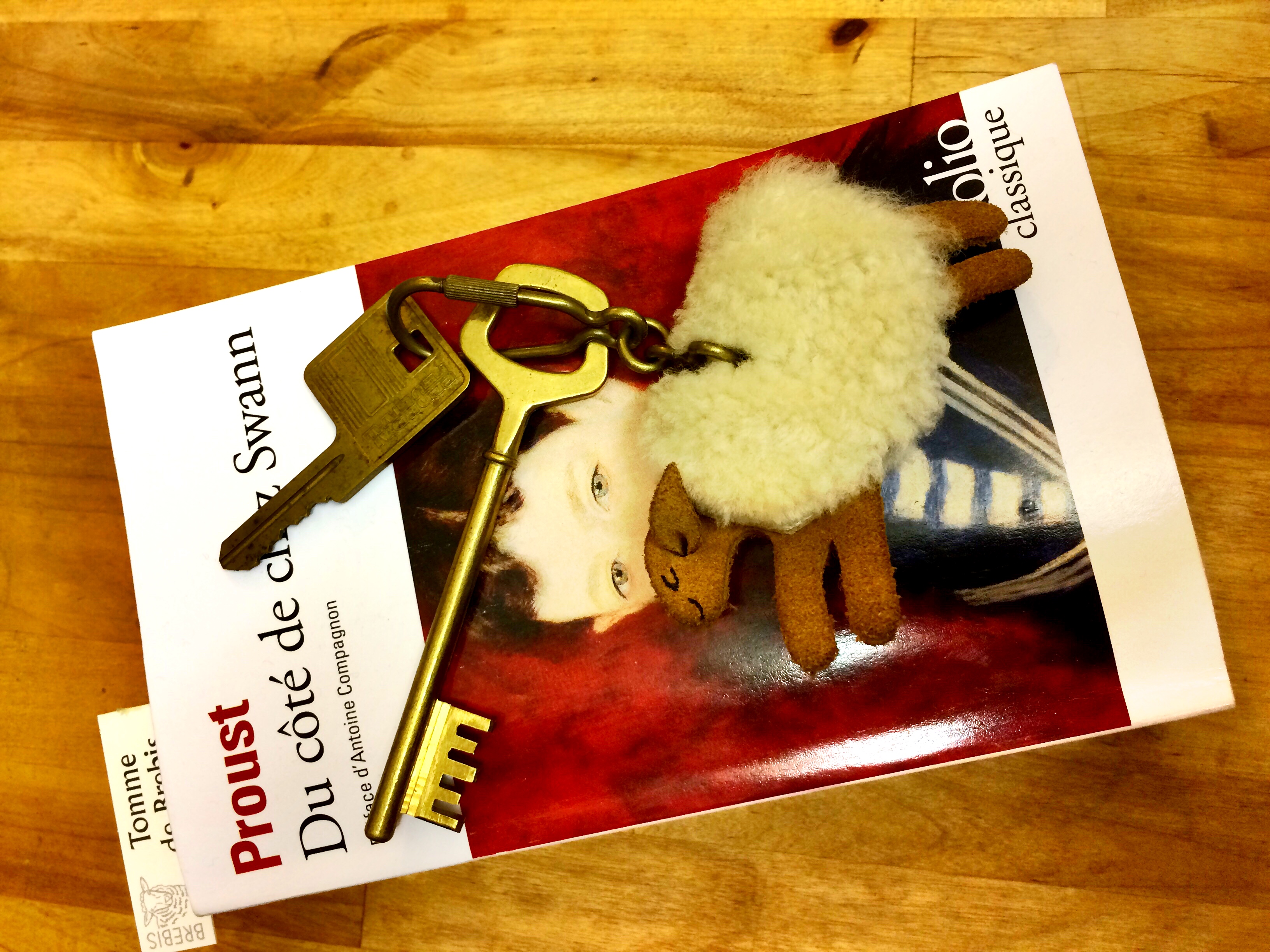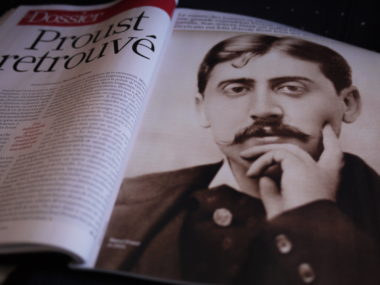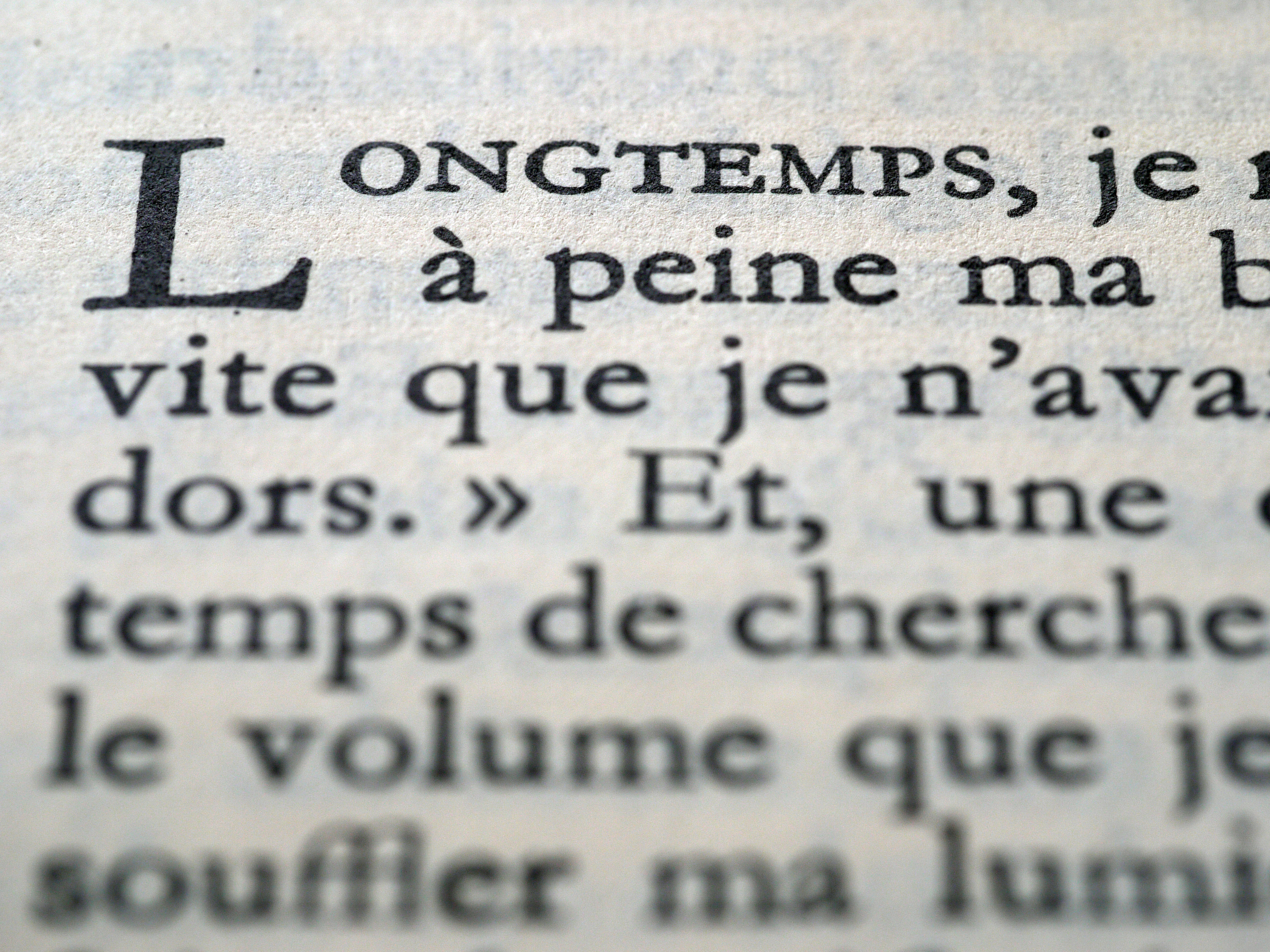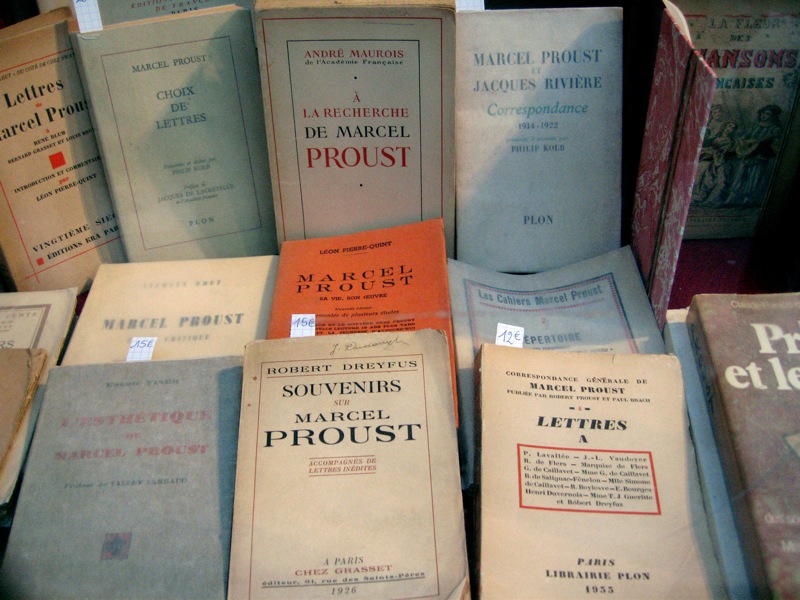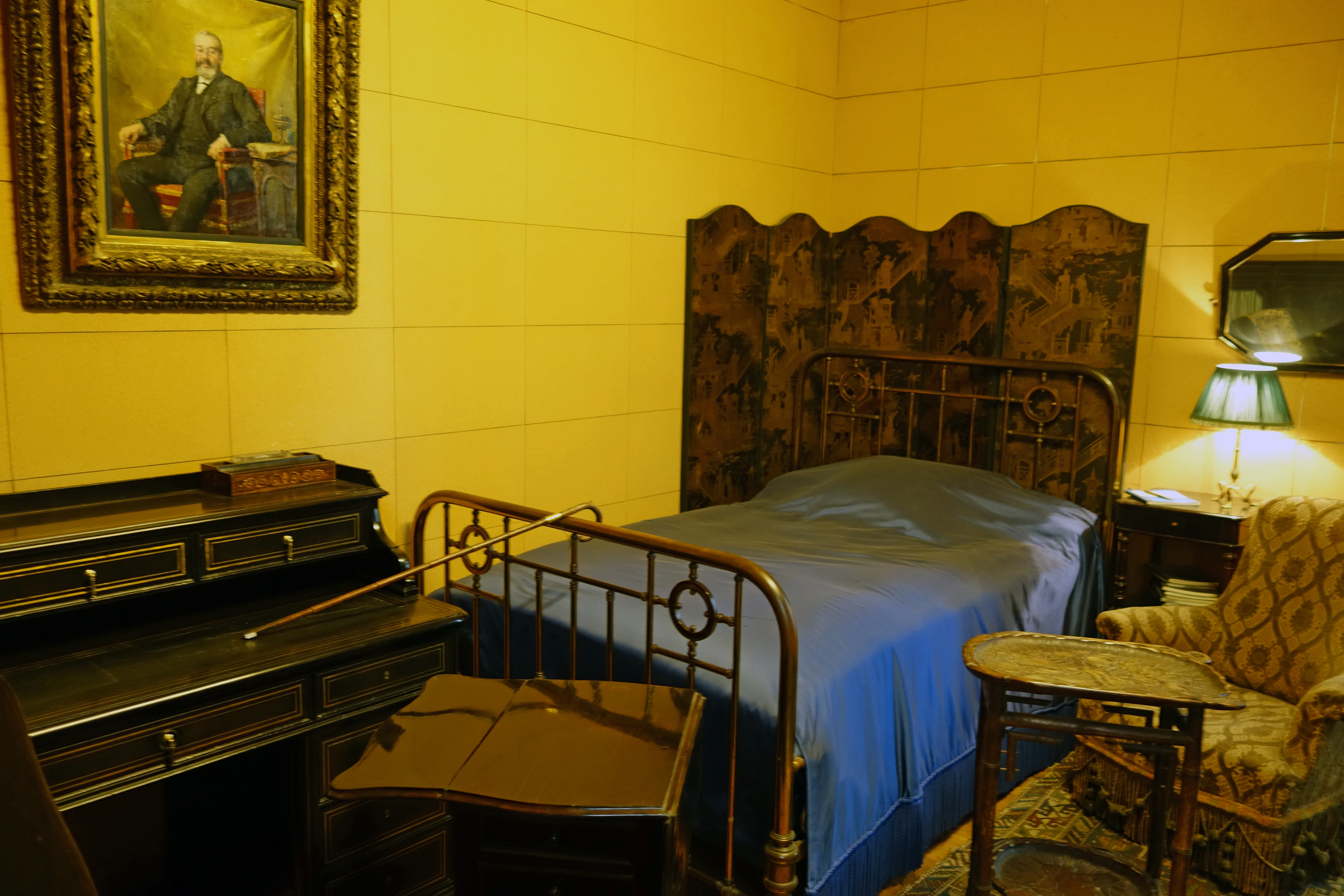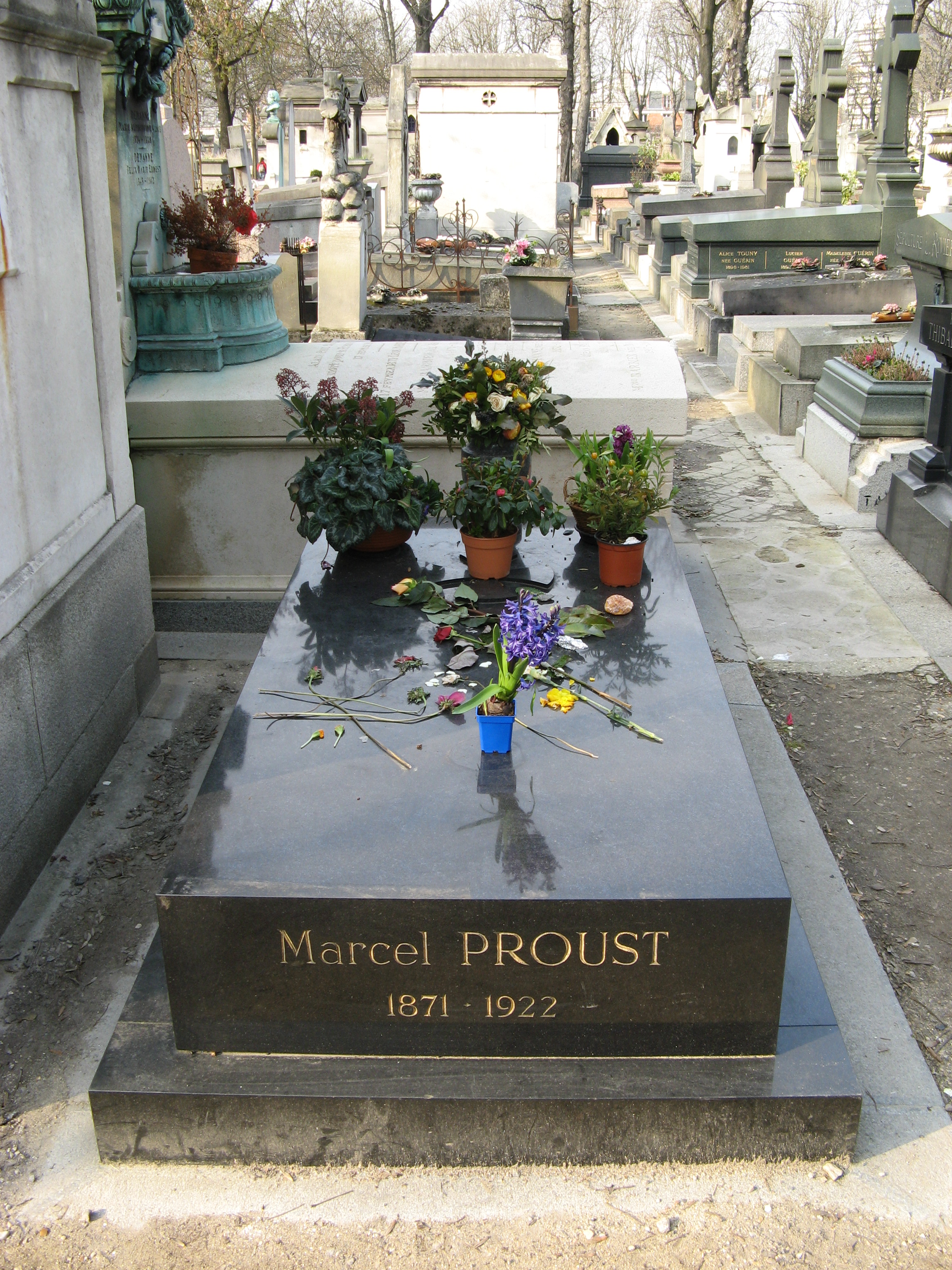How to get into French literature – a guide by author: Marcel Proust
Finding a fabulous book to delve into, or even one to recommend, can sometimes be tricky. I’m sure that you’ve had the experience of wandering around a bookstore trying to gain inspiration on what to read. I continue this series with Marcel Proust; his life and my favourite of his works.
Here you will discover an insight, a taste; their lives, their work, and why they are seen as the some of the most popular and outstanding writers of the modern-day French language.
On y va ?
England may have Shakespeare, Dickens – and nowadays, Carol Ann Duffy.
But what about France?
Where does its literary greatness lie?
I’ll show why I appreciate these writers as I highlight their importance to the French language, and even to World Literature.
By delving into the past to discover the most famous works of these French authors, you may find a new writer to read – or to recommend.
For the second in this series, I am sharing with you my interest in Marcel Proust.
What do I love about Marcel Proust?
Marcel Proust’s masterpiece, and a personal favorite of mine, ‘A la recherche du temps perdu’, is recorded in the Guinness World Records as the longest novel ever written.
The 13 volumes include 9 609 000 characters and dominated the 20th century French literary scene, as well as world literature, known as a famous piece of art worldwide.
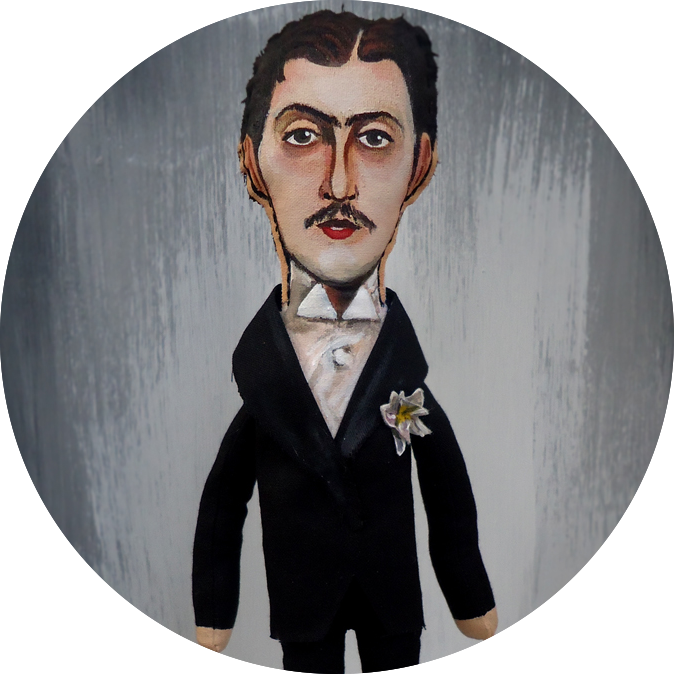 Proust placed his heart and soul into his writing, painstakingly writing, editing, and re-editing until his work was perfect.
Proust placed his heart and soul into his writing, painstakingly writing, editing, and re-editing until his work was perfect.
His writing style consists of sentences often spanning more than a page, yet written with the most interesting and, at times, most poetic form I have ever had the pleasure to read.
Proust is officially the writer of time and memory. I admire his technique of connecting the narrator with the reader through the common placement of small experiences that all readers could have experienced.
The Proust work I love the most:
‘Un amour de Swann’
This is part of the first volume: Du côté de chez Swann. It depicts Swann’s love affair with Odette and the struggles he encounters.
Initially, the novel portrays Odette as not being Swann’s ‘type’ of lady; she’s different from all his previous lovers and, at first, he is unsure about her.
Proust depicts how Swann falls in love and uses an incredible technique of music to illustrate a connection between the two characters.
- The melody which is played when they are in a Salon together leads to Swann’s original memory of the song being played in a theatre
- It is said to unite the two characters and begins to represent a repetition of their love together
Yet, this is quickly changed into something of darkness when Swann discovers more and more truths about his ‘perfect’ companion…
The vocabulary in this story originally captured my interest in Proust’s work, with descriptions of the music that appear as rich as listening to the melody yourself.
Buy here en français and English
‘Le Temps retrouvé’
This is the last volume in Proust’s ‘A la recherche’ and explains his motivation for writing the entire work. This final volume steers away from the plot to depict how Proust wanted to bring his past into the future through art.
It shows Proust’s concerns with la mémoire involuntaire (involuntary memory), capturing a small moment that leads to the recollection of a lost past, and how he wished for the reader to be connected to this.
An interesting image portrayed by Proust is the idea of the reader re-reading a book long after they first discovered it, allowing themselves to remember their previous self-encountering the book.
The final volume is an in-depth depiction of the difficulties of creating la vraie réalité and using artistic license.
Buy: en français
‘Journées de lecture’
Outside of ‘A la recherche’, Proust’s critical work is also highly captivating for a reader. Bibliophiles globally love this book: a small piece that describes the pleasures of reading.
It depicts Proust’s own experience with books, the beauty behind reading, and the memories he has from it. Like his most famous writings, Proust again uses his poetic plume (writer’s pen) in this small study.
He states that the difference between a book and a reader is not that one has more or less wisdom; rather, the manner in which we communicate with them. A small pleasure to read!
Buy: en français
The life of Marcel Proust
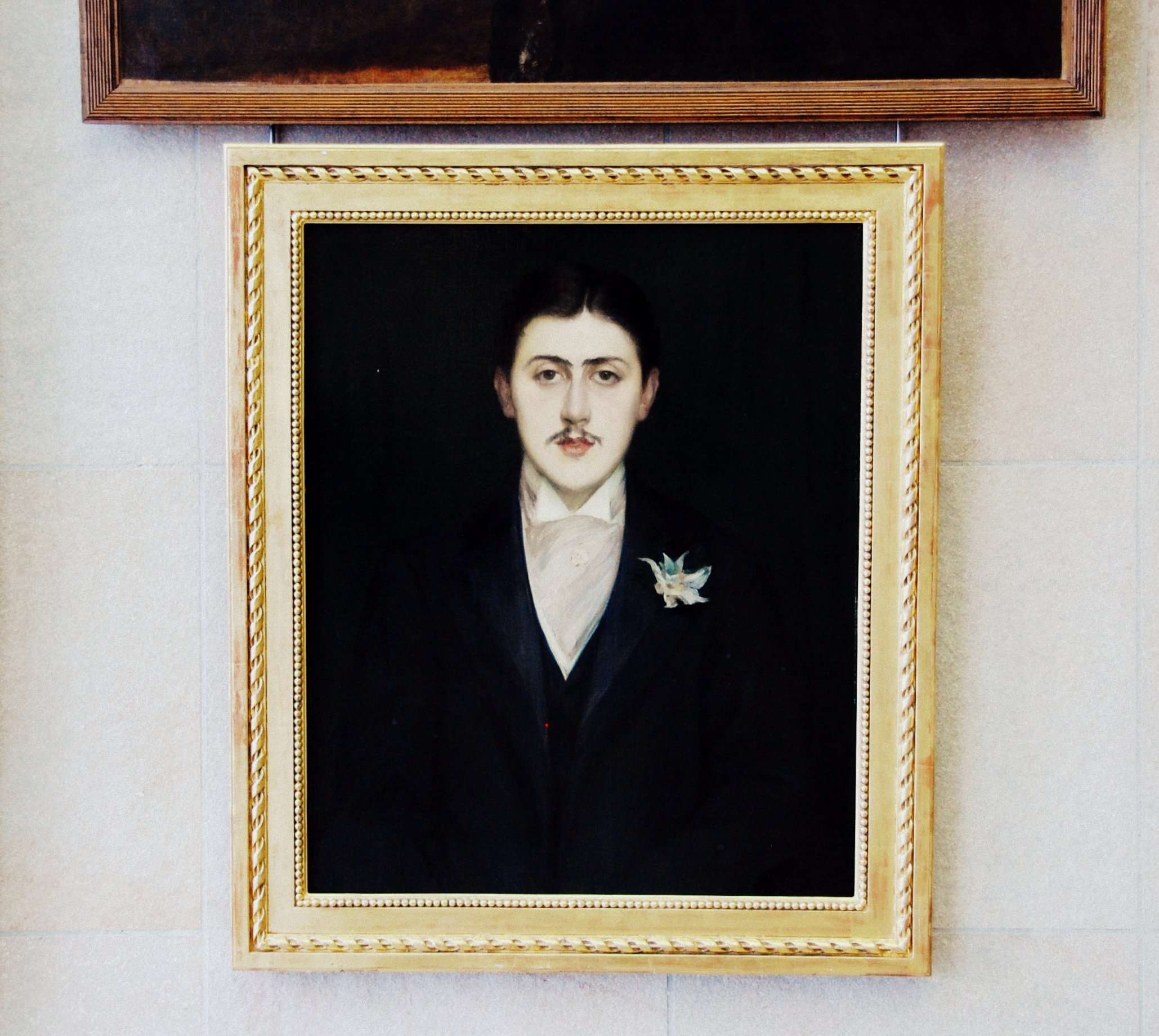
The following is adapted from Richard Bales’ 2006 publication ‘The Cambridge Companion to Proust’.
Birth:
10 July 1871 in Auteuil, Paris, France, Marcel Proust was born to parents, Marcel Valentin Louis Eugène Georges Proust and Jeanne-Clémence Weil. Members of the bourgeoisie, they lived in the fashionable 8e of Paris, where Proust remained, moving only toward the end of his life.
Childhood:
Proust was a sickly child – suffering from severe asthma – which prevented him from attending much of his schooling at the Lycée Fontantes between 1882-89.
Adulthood:
- After a year of military service at Coligny Barracks in Orléans from 1889-90, Proust took Law and Political Science at University
- He achieved his degree in Law in 1893 and in ‘ès lettres’ in 1895
- During his student years, he co-founded and wrote for a short-lived journal, ‘Le Banquet’, alongside contributing to other journals
- In 1895, he began writing ‘Jean Santeuil’ which he never finished
- A year later, he published ‘Les Plaisirs et les jours’
- In 1898, after Zola’s publication of ‘J’accuse’ on the Dreyfus affair, Marcel Proust participated by supporting the Dreyfus cause
- 1903 saw the death of Proust’s father, and two years later, the subsequent death of his mother. He became a devastated man
- In 1908, he began writing a large study on different authors, now known as ‘Contre Sainte Beuve’
- This essay was then transformed into a novel a year later, eventually taking the form of Proust’s most famous work
- Four years later, he sought a publisher, yet struggled to find any interest
- 1913 saw the publication of ‘Du côté de chez Swann’, but at Proust’s own expense
- The general title of the novel was changed from ‘Les Intermittences du cœur’ to ‘A la recherche du temps perdu’
- In 1914, the outbreak of World War I stopped the printing of the second volume
- With no possible publication during this period, Proust expanded his novel
- Between 1918 and 1922 ‘A l’ombre des jeunes filles en fleurs’, ‘Le Côté de Guermantes I’, ‘Le Côté de Guermantes II’ and ‘Sodome et Gomorrhe I’ were published
Death:
On 18 November 1922 Proust died of pneumonia and was buried in Paris’ Père Lachaise cemetery on 22 November.
After his death, ‘Sodome et Gomorrhe III – La Prisonnière’, ‘Albertine disparue’, ‘Le Temps retrouvé’, ‘Jean Santeuil’ and ‘Contre Sainte-Beuve’ were published posthumously.
Have you read any of Marcel Proust’s work? Let us know your thoughts about it below!
Image credits:
1. Books by Eli Francis, via Unsplash
2. Proust doll, via Flickr
3. Du côté de chez Swann, via Flikr
4. Proust retrouvé, via Flickr
5. Open book, via Flickr
6. Proust Musée d’Orsay, via Flickr
7. Proust books, via Flickr
8. Proust’s bedroom, via Flickr
9. Proust’s grave, via Wikipedia
More in this series:
1. How to get into French literature – a guide by author: Gustave Flaubert
– This article –
2. How to get into French literature – a guide by author: Marcel Proust


